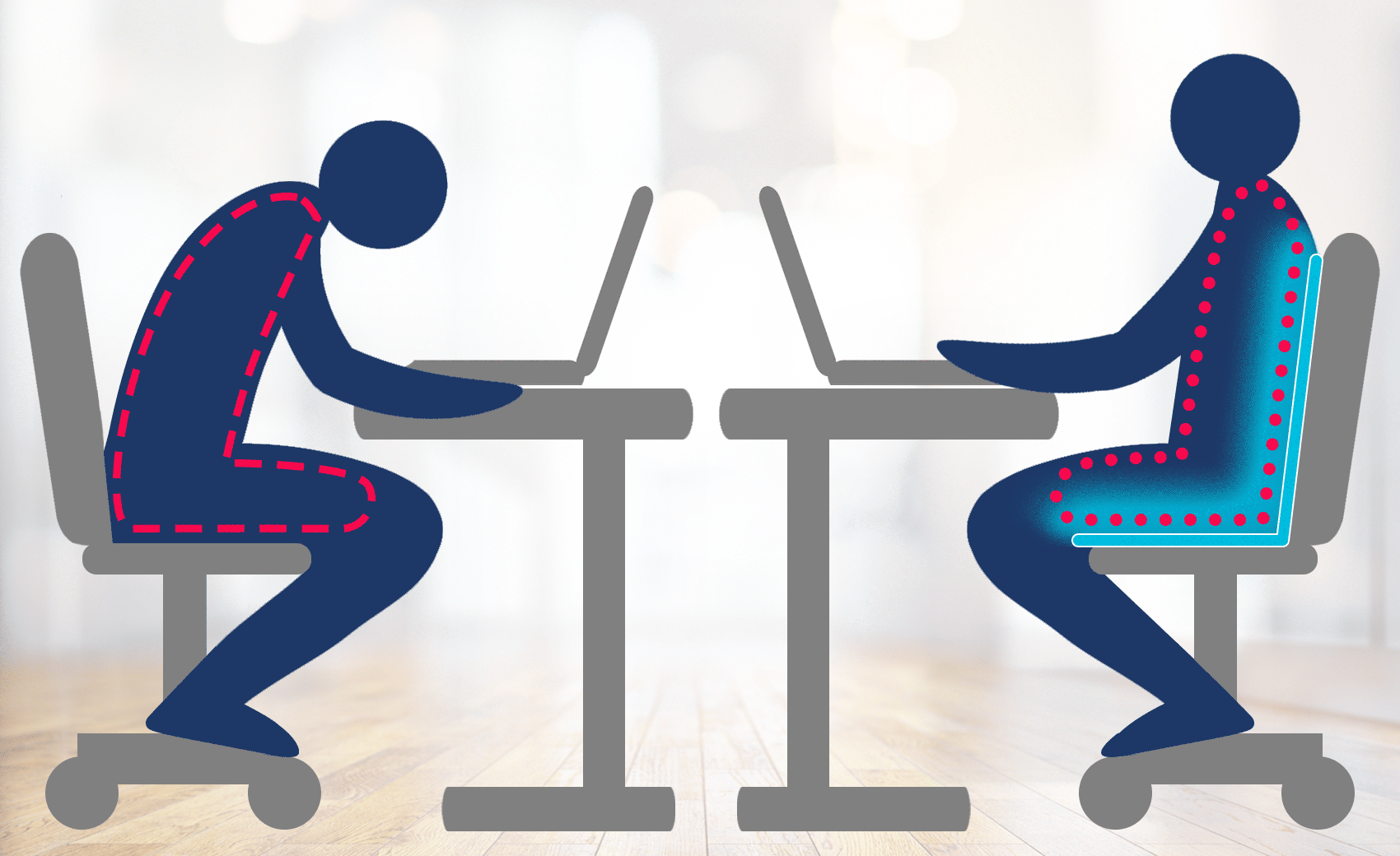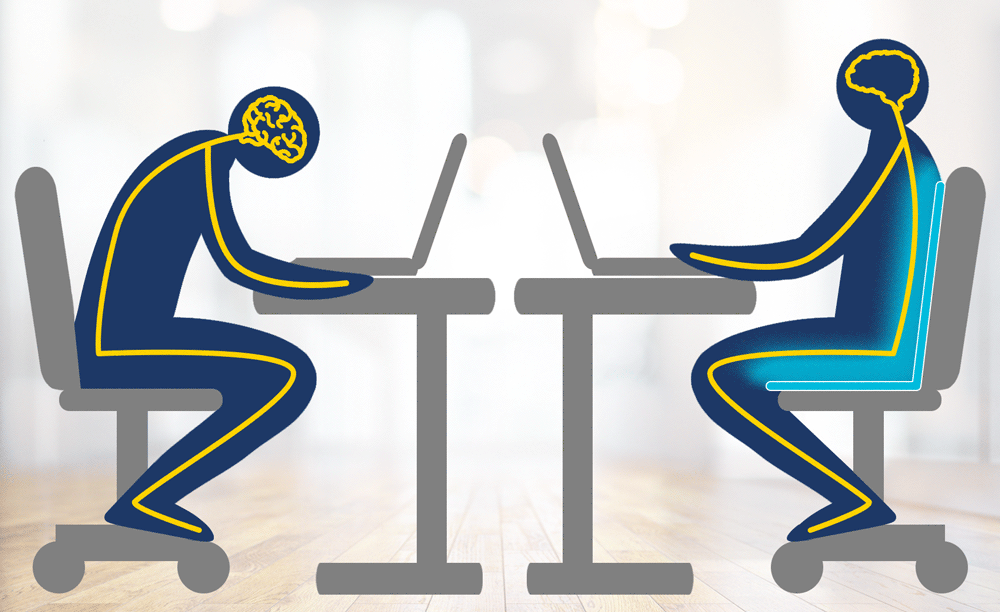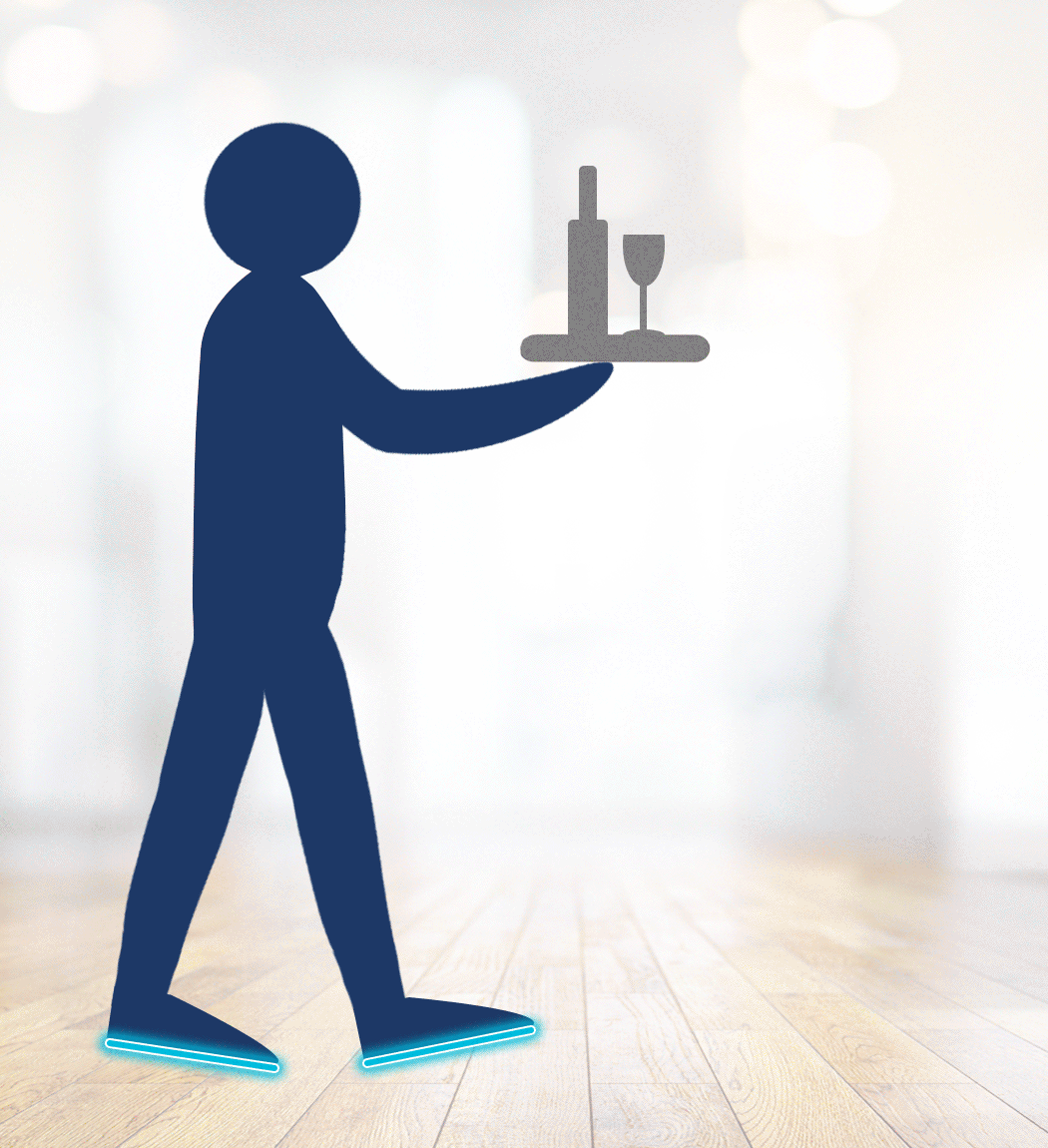Kleinsche Fields
for Concentration, Performance Stability and Vitality
Active principle 1 for your working day
Relaxation of the muscles while sitting
Office workers using a BioRelax seat cover should be able to work in a more relaxed manner. The aim is to support blood circulation in such a way that stress symptoms caused by prolonged sitting are reduced. Daily issues such as neck pain, muscle tension, or a slouched posture can be prevented.
How does this work? The back muscles are primarily stabilising muscles, and they tend to tense up during extended periods of sitting. Optimal circulation is essential to supply oxygen and remove waste products from the muscles. When well supplied, the typical tension in these muscles can often be avoided. Some users also experience improved circulation as an overall sense of well-being, with fewer symptoms of fatigue.


Active principle 2 for your working day
Mental activation during work
The aim of using the BioRelax seat cover is to enhance focus, alertness, and mental clarity. How does it work? Kleinsche Fields are said to naturally stimulate the brain and neural pathways. As an electrical marvel, the brain may respond to the gentle influence on the body’s micro-voltage with increased performance and mental readiness.Kleinsche Fields serve as a consistent energy source and are believed to have a supportive effect on the cells and the body. This active concept aims to make the working day more manageable — so that you remain alert, active, and at ease throughout the day.

Your daily companion – the BioRelax seat cover
The BioRelax seat cover
Make your sitting time work for your health. Suitable for all types of chairs and armchairs, the gentle magnetic fields of Kleinsche Fields naturally interact with the body’s cells and are designed to support energy metabolism and performance. This effect is particularly aimed at enhancing cognitive performance, reducing fatigue, and relaxing the muscles.
To the seat cushion

Our product recommendations for you
2. Xie, Lulu et al.: Sleep Drives Metabolite Clearance from the Adult Brain, Science 2013, Vol 342, Issue 6156, pp. 373-377, DOI: 10.1126/science.1241224.
3. Axelsson, John et al.: Sleepiness as motivation: a potential mechanism for how sleep deprivation affects behavior, Sleep 2020, Vol 43, Issue 6, DOI: 10.1093/sleep/zsz291.
4. Nissen, Christoph et al.: Sleep is more than rest for plasticity in the human cortex, Sleep 2021, Vol 44, Issue 3, DOI: 10.1093/sleep/zsaa216.
5. Spaeth, Andrea M., Dinges, David F., Goel, Namni: Effects of Experimental Sleep Restriction on Weight Gain, Caloric Intake, and Meal Timing in Healthy Adults, Sleep 2013, 1;36(7):981-990, DOI: 10.5665/sleep.2792.
6. Rihm, J. et.al.: Sleep Depreivation Selectively Upregulates an Amygdala-Hypothalamic Circuit Involved in Food Reward, The Journal of Neuroscience 2019, pp. 888 – 899.
7. Yu, Xiao et al.: A specific circuit in the midbrain detects stress and induces restorative sleep, Science 2022, Vol 377, Issue 6601, pp. 63-72, DOI: 10.1126/science.abn0853.
8. König, Brigitte: Einfluss von Klein`sche Felder Magnetstreifen auf Mitochondrienfunktionen. Voruntersuchung mit differenzierten THP-1-Zellen, Magdeburg, 2014.
9. König, Brigitte: Einfluss von Klein`sche Felder Magnetstreifen auf Mitochondrienfunktionen. Eine in-vitro Pilotstudie, Magdeburg, 2014.
10. König, Brigitte: Eine in-vivo/ex-vivo/in-vitro Pilotstudie–Beeinflussung von klinisch-chemischen Parametern und von Mitochondrienfunktionen peripherer Blutleukozyten (PBMC) durch Kleinsche Felder Magnetstreifen, Otto-von-Guericke-Universität Magdeburg, Germany, 2014.
11. Heisterkamp, Jonas: Beeinflussung der mitochondrialen Bioenergetik durch permanente polymorphe Magnetfelder, Otto-von-Guericke-Universität Magdeburg, Germany, 2017, (unveröffentlichte Bachelorarbeit).











